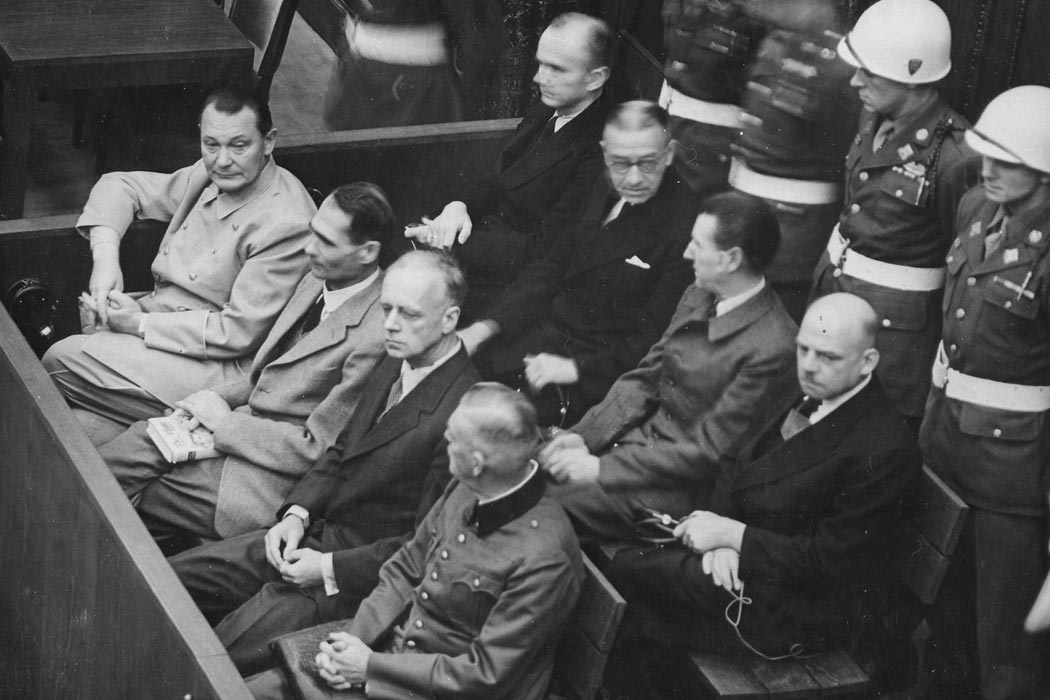On November 20, 1945, in the wake of the Second World War, the Nuremberg War Crime Trials began. Over the course of the following year, the most significant military tribunal of the twentieth century would take place, resulting in the conviction and, in many cases, execution of the highest ranking Nazi officials, diplomats, and generals, as well as associated individuals such as lawyers, doctors, and other professionals.
One of the most concise and accessible accounts of the event is Telford Taylor’s “The Nuremberg War Crimes Trials: An Appraisal,” which examines the facts of the trials and investigates the implications they would have upon international law.
The first trial was overseen by judges representing France, the United States, the United Kingdom, and Soviet Union. A. L. Goodhart addresses how such seemingly disparate countries could come to a unified decision about what constituted justice in such unique circumstances in his essay “Questions and Answers concerning the Nuremberg Trials.”
Twelve more trials would eventually take place, with 177 individuals indicted and tried; almost half of whom were S.S. leaders. However, Taylor notes that some of those on trial were not even Nazi Party members, and asks how accountable individuals should be made for the crimes of a nation; especially if their acts were carried out under intimidation, or fear of death to themselves and their families.
A very personal account of the trials was written by Willis Smith for the American Bar Association Journal, in which he describes his experiences upon attending the trials in March 1946:
My first view of the Nuremberg trials was somewhat with the feeling of awe at the sight of the twenty-one prisoners within the dock whose names had so many times appeared on the first pages of our newspapers, and who themselves have been labelled innumerable times as the arch criminals of the modern world.
The highest-ranking Nazi officials who were brought to trial were Hermann Göring, Rudolf Hess, and Joachim von Ribbentrop. Hess was found not guilty of crimes against humanity and escaped the hangman’s noose. Göring committed suicide the morning he was due to be executed, resulting in von Ribbentrop being the first Nazi to be put to death as a result of the trials.
Chief prosecutor Supreme Court Justice Robert H. Jackson summarized the trials in a statement, which declared that Nuremberg will “commend itself to posterity as fulfilling humanity’s aspirations to do justice.”
Editor’s Note: A comma was added to the second sentence of this article.







